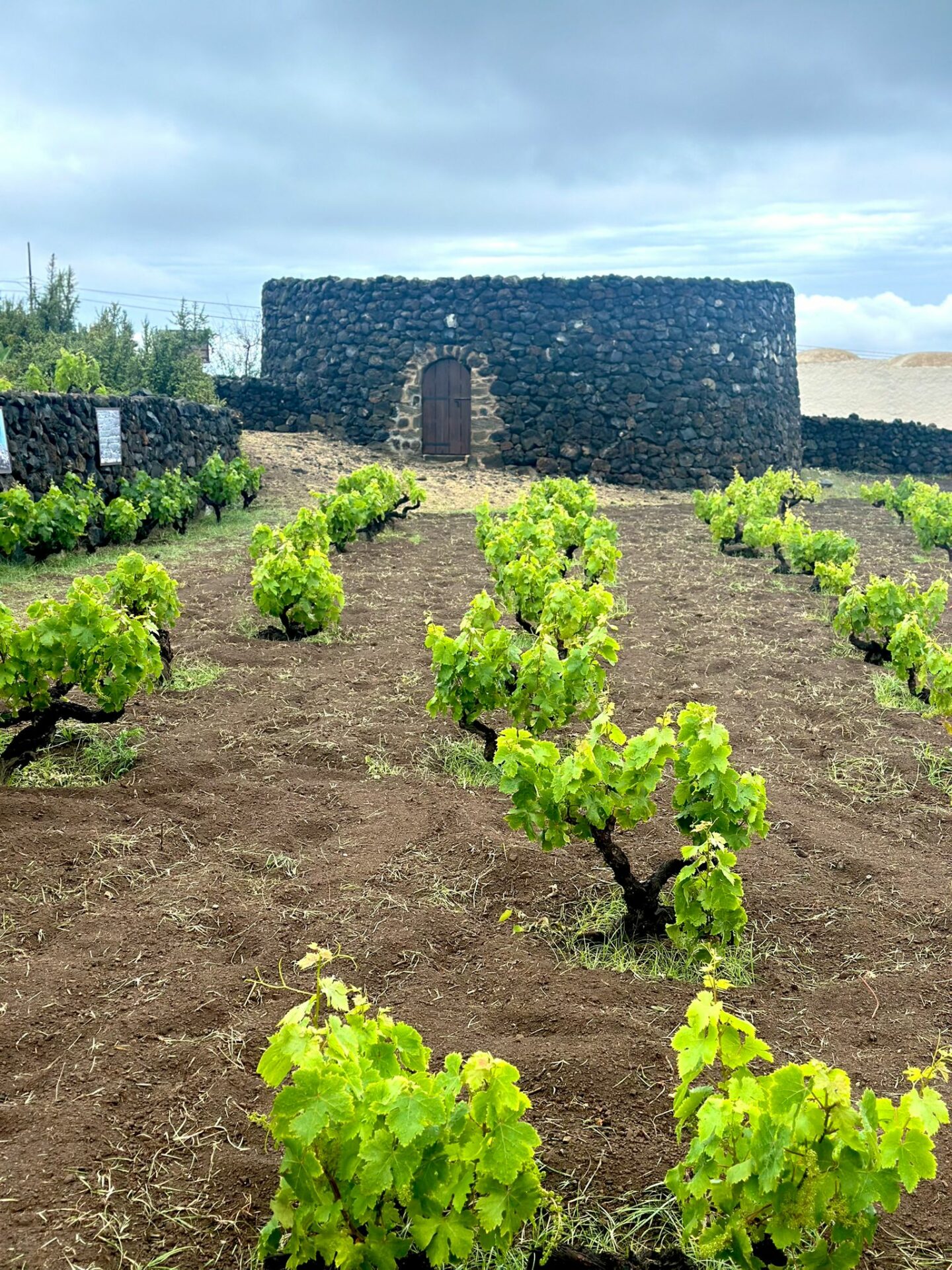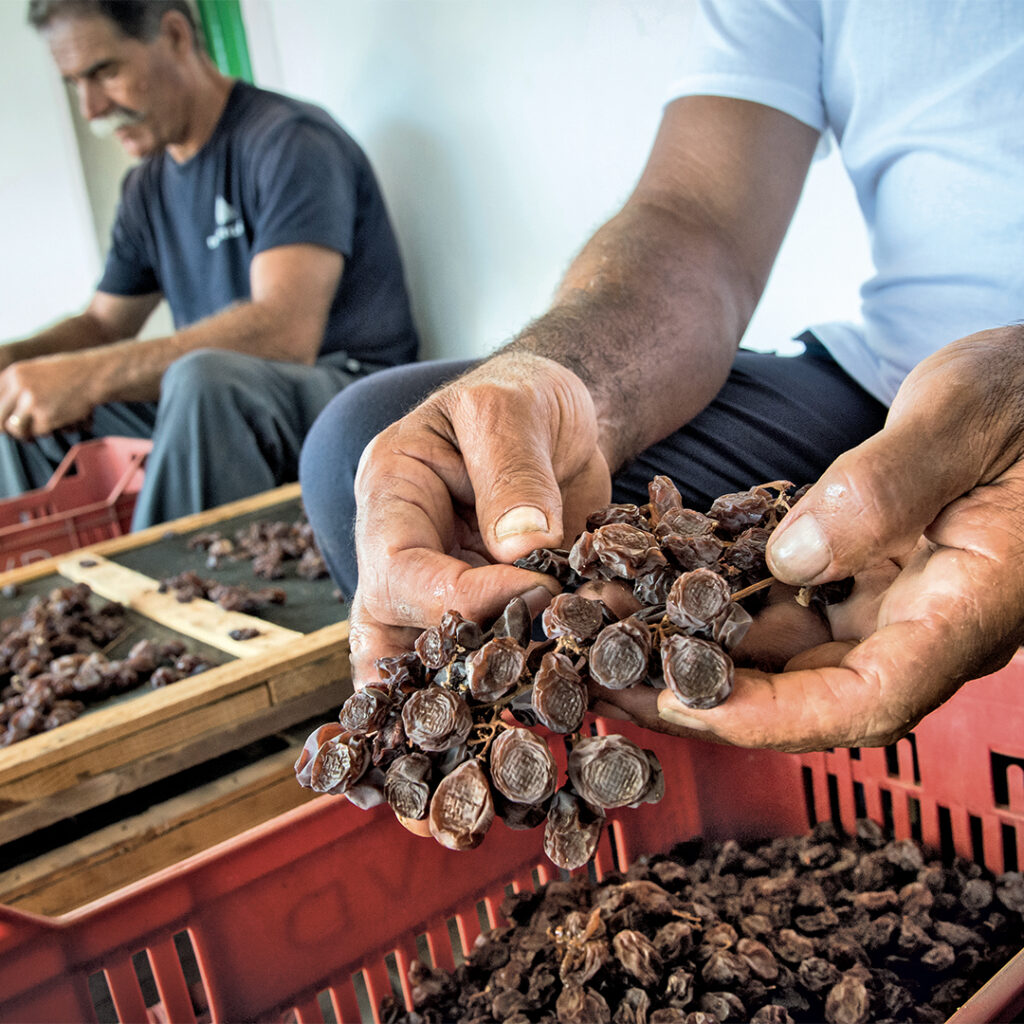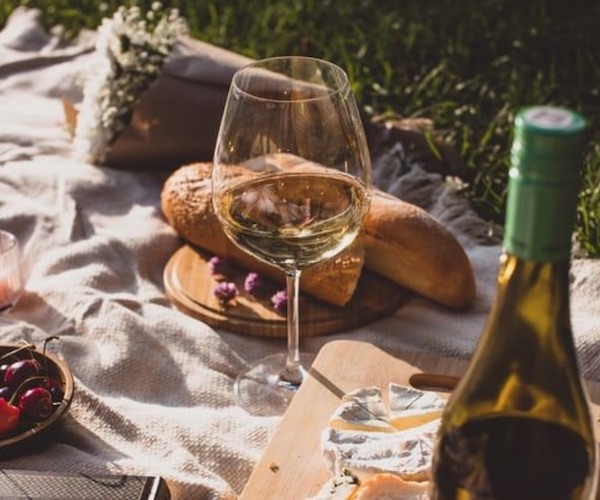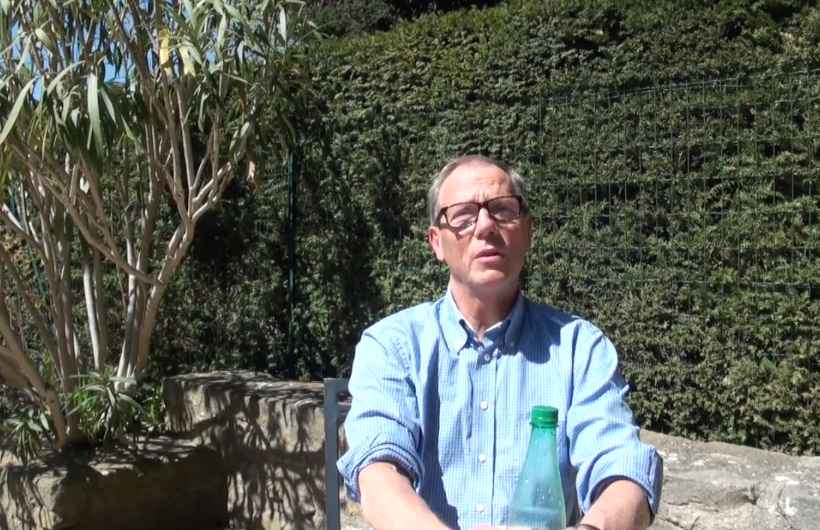The island of Pantelleria lies 100km to the southwest of Sicily, closer to Tunisia than Italy. As our plane from Trapani made its descent, the rugged hilly landscape, sculpted by lava flows and dotted with scrubby vegetation, stood out against the endless blue sea.
Despite its abundant waters, Pantelleria is focused on agriculture. Olive groves, citrus trees, caper bushes, and vineyards all thrive in its nutrient-rich volcanic soils. As much as I love good olive oil and salted capers, it was (of course) the wines that had drawn me to the island. My fellow travellers and I had come to discover the famous Passito di Pantelleria and the increasing trend for dry white wines.
The island is planted entirely to the Zibibbo grape (aka Muscat d’Alexandrie). Until the 1980s, some 5000 hectares of this aromatic, fruity variety were grown across the island – produced for sale as table grapes, wine, and raisins. However, with the arrival of cheaper, seedless, international varieties like Thompson seedless, Pantelleria’s vineyard acreage has dwindled to just over 400 hectares today.


This is a challenging place to grow grapes or indeed any agricultural crop. The original Arabic name for the island was Bint al-Riyāḥ, which means, daughter of the winds. The climate is decidedly hot and dry during the growing season, and the vineyards are constantly buffeted by strong sea breezes; mainly the Sirocco (a hot, dry Saharan wind) and the Mistral (a cooler northerly gale).
To adapt to their environment, the farmers of Pantelleria have developed a number of ingenious cultivation techniques over the centuries. The vineyards are low-lying bush vines, each cradled within a circular hollow that acts as both a wind barrier and a basin to capture ambient moisture. This Alberello Pantesco vine training system is recognized by Unesco as part of the Intangible Cultural Heritage of Humanity.
Citrus trees are grown within circular, walled shelters. These Giardini Panteschi (Pantellerian gardens) slope inwards from the top to draw down fog to water the plants. The branches of young olive trees are weighted down with heavy rocks to train them to grow in a downward arc, low to the ground. And all across the island, a network of 7,000 kilometres of dry lava stone walls form terraces to limit soil erosion.


Photo credit: Isobel Salomon

In this hilly landscape, agricultural work is largely carried out by hand. Caper bushes are visited daily to pluck ripe buds. The grape and olive harvests are also manual. In the past, famers carried out these back breaking efforts independently, tending to their small holdings alone. Now, as the region strives to reverse a trend of declining cultivation, collective work is prioritized.
Vineyards dot the island, in small plots grown at sea level, all the way up to 600 metres in altitude. Our guide, José Rallo, owner of top Sicilian winery, Donnafugata, explained that – given the diversity of altitudes, orientations, and so forth, the Zibibbo harvest on Pantelleria often spans several months, from early August into October. Rallo is well placed to understand Pantelleria grape growing, with Donnafugata’s 68-hectares of vineyards spread over 16 different districts.
The grape drying process for Passito di Pantelleria lasts from a couple of weeks to just over a month. However, new batches are regularly brought in for drying as different plots attain ripeness. The vinification process is therefore quite long, with newly raisined grapes added to fermenting musts a number of times.

Passito grapes. Photo credit: Donnafugata
While many producers still age in barrel, Donnafugata chooses to mature its iconic Ben Ryé cuvée in stainless steel and bottle, to preserve freshness and aromatic appeal. Our evening meal was capped off with the hedonistic 2014 vintage. A dessert on to itself, the Ben Ryé offered a pretty golden amber colour, candied citrus, caramel, raisin, and roasted, nutty flavours, a velvety texture, and luscious sweetness.
Seductive as a fine Passito di Pantelleria may be, there is growing recognition among Pantelleria’s wine producers of the niche interest for such wines today. In response, a growing contingent are producing dry Zibibbo white wines.
The combination of aromatic grapevines, plunged into volcanic sands, buffeted by briny sea breezes, and surrounded by wild oregano, rosemary, and other dry maquis, gives a compelling result. Dry Zibibbo wines from Pantelleria have the hallmark floral, grapey, peach notes typical of Muscat, with underlying herbal hints, crisp acidity, and subtle salinity that refreshes the finish. Donnafugata’s Lighea cuvée was a perfect foil for a lunch of fresh-caught sea bream sipped a few metres from the eastern shoreline.

After such a short visit, it would have been easy to leave with a romantic view of the struggles and glory of grape growing on Pantelleria. But, in reality, the labour-intensive nature of its viticulture, the difficult climate, and lack of local educational facilities have been driving younger generations off the island for decades.
To stem the flow, a voluntary consortium for the protection and enhancement of Pantelleria DOC wines was set up. Their goal is to increase production and entice young people back to the land, through a series of scholarships, training programs, and financial incentives.
Only time will tell if the initiative is a success. In the meantime, I shall seek out the thirst quenching, dry whites and cellar worthy passito di Pantelleria to encourage them in my humble way.







